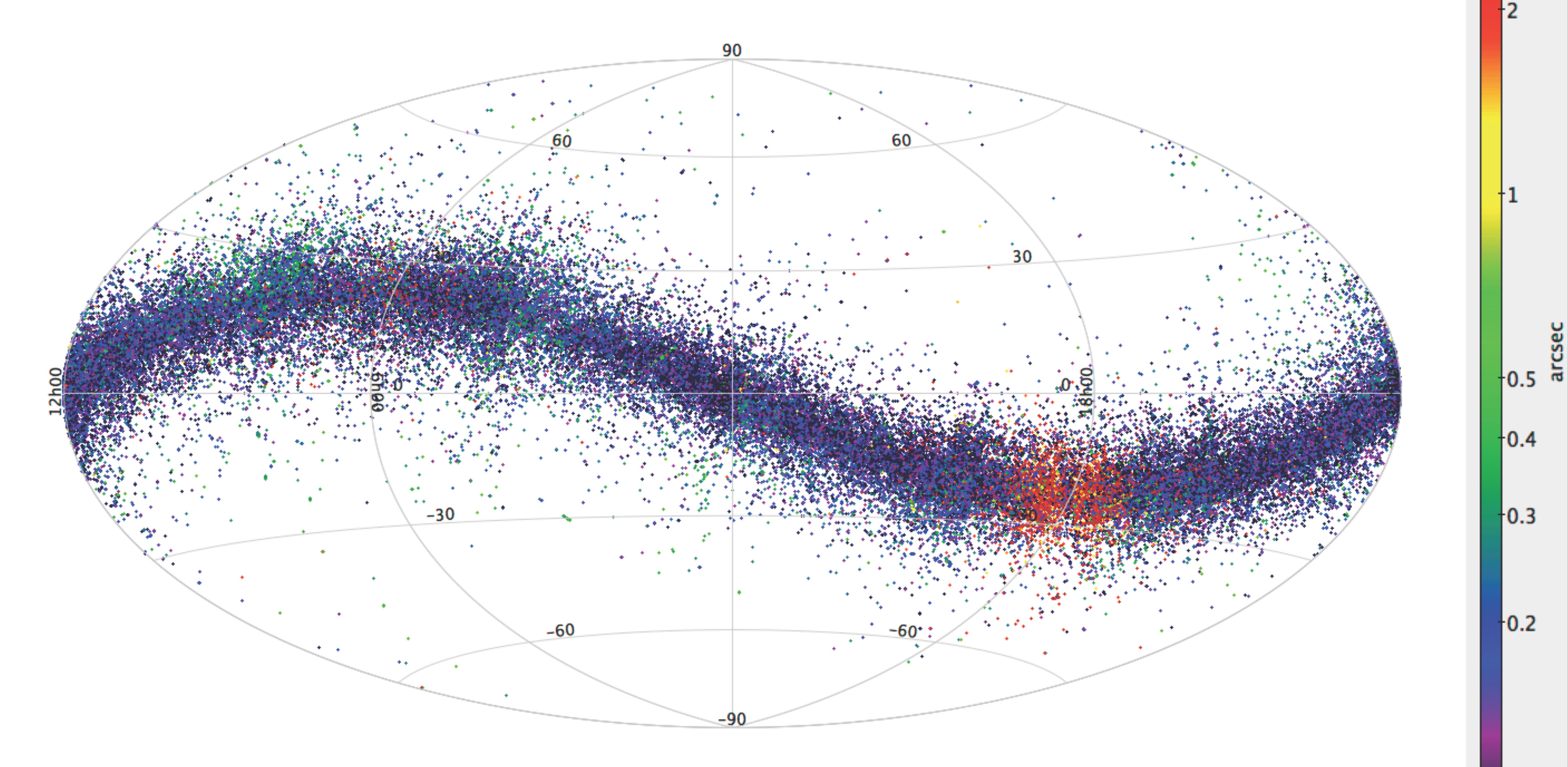|
Gaia observes more than a billion stars on the whole sky, without knowing in advance where they are. However, as each source is observed multiple times, the Initial Data Processing (IDT, a highly sophisticated piece of software running on the data transmitted by the satellite, developed by the University of Barcelona team) has the task of grouping together multiple observations of the same source.
This task, the so-called "cross-matching", involves comparing the positions recorded by Gaia. If two sources are observed, within the uncertainty, at the same position on the sky they are recognized to be – in fact – the same source.
For asteroids, this cannot work, as they are always moving amongst the stars - slowly (typically, an asteroid in the Main Belt can take a couple of days to move a distance of a Moon diameter) but fast enough for Gaia (several pixels during a single transit on the focal plane)! As a result, Gaia never sees an asteroid at the same place, and the cross-matching described above leaves these detections as "orphans" that do not repeat over time.
Such "un-matched" observations are processed by software running at the CNES data processing center (in Toulouse, France), written by several European astronomers under the coordination of P. Tanga (Observatoire de la Côte d'Azur, France). The first task of this software is the identification of known asteroids that can proceed only by comparing the position of the "orphan" detections to the predictions provided by a specific software module. The reference data, in this case, are the known asteroid orbits (a few 100,000 objects), that are used to generate the position of all of them for any Gaia measurement of a moving source.
Such a procedure has been implemented in the processing pipeline by J. Berthier (IMCCE) and collaborators and has been applied independently (by F. Mignard and L. Galluccio, OCA, France) on eight months of Gaia data and a sample of 50,000 asteroids to test its detection efficiency and to get a flavour of the performance of asteroid identification.
The picture above is one of the results of such a test, showing where Gaia has seen asteroids on the sky. The reference frame for the plot is equatorial, implying that the ecliptic (the orbital plane of the Earth and – also – of most other Solar System objects) appears inclined with respect to the celestial equator, and follows the sinusoidal path on which the asteroids cluster. A total of 418,000 observations by Gaia, over that period, have been successfully associated to one of the asteroids of the sample, a number very close to the expectations.
The colour of the dots is related to the accuracy of the identification, in other words to the distance between the position detected by Gaia and the one predicted by the computation of the ephemerides. For most asteroids, the identification works well (the discrepancies are less than 1 arcsec) but for others – whose orbit is poorly known – identification may become tricky and requires further processing steps.
Interestingly, the plot clearly shows a region of mixed colours, very localised, where large errors seem to be more frequent. In fact, in that region, the ecliptic crosses the Galactic plane, not far from its densest parts. The high stellar density complicates the task of IDT cross-matching, and more stars there, remaining un-matched, are incorrectly considered as asteroids. Their positions correspond to some predicted asteroid positions only by chance, so that they show up with larger discrepancies. This is an expected effect of lower efficiency in extremely crowded areas of the sky, which are very limited in size.
In fact, both statistics and analysis of samples of individual objects show that Gaia is very efficient in detecting asteroids, and the whole expected population is being observed, within a few percent of the completeness at the magnitude limit of the mission.
Credits: ESA/Gaia/DPAC/CU4, L. Galluccio, F. Mignard, P. Tanga (Observatoire de la Côte d'Azur)
[Published: 31/07/2015]
|








































 Sign in
Sign in
 Science & Technology
Science & Technology

